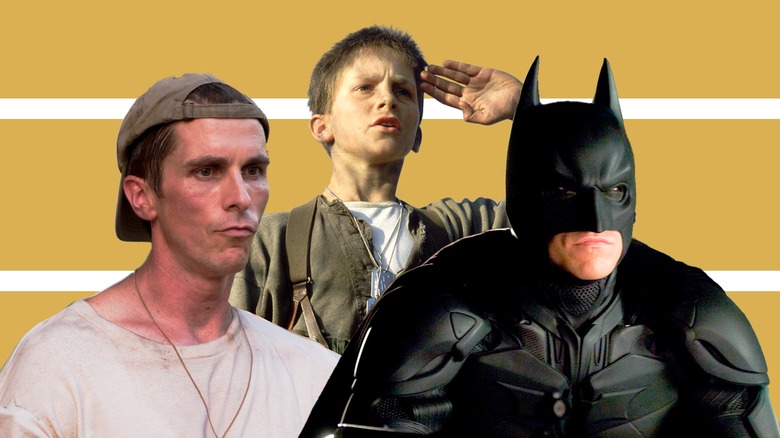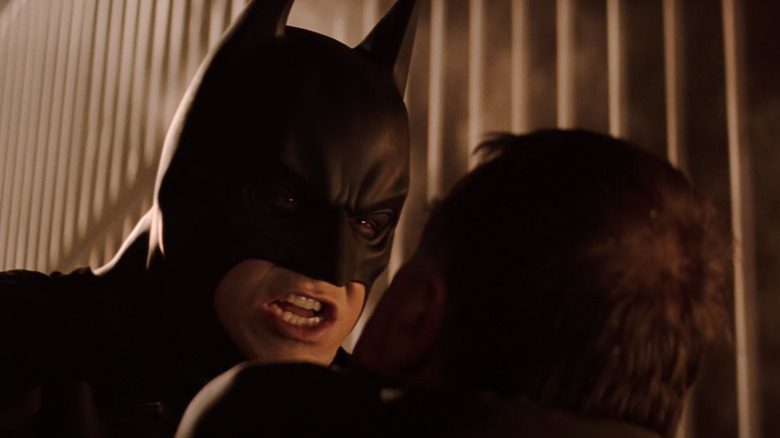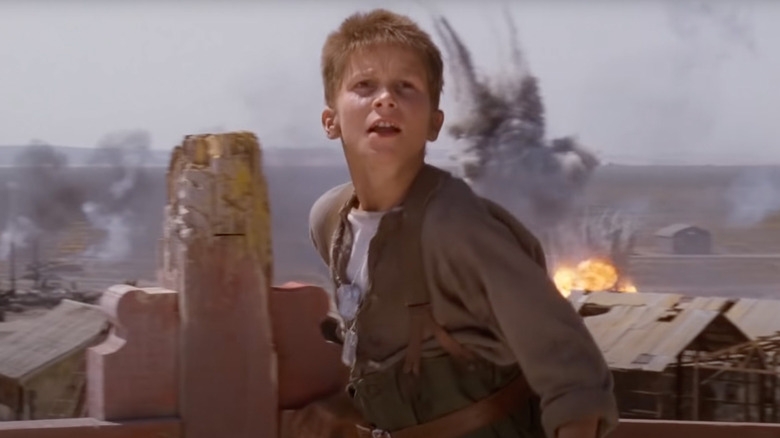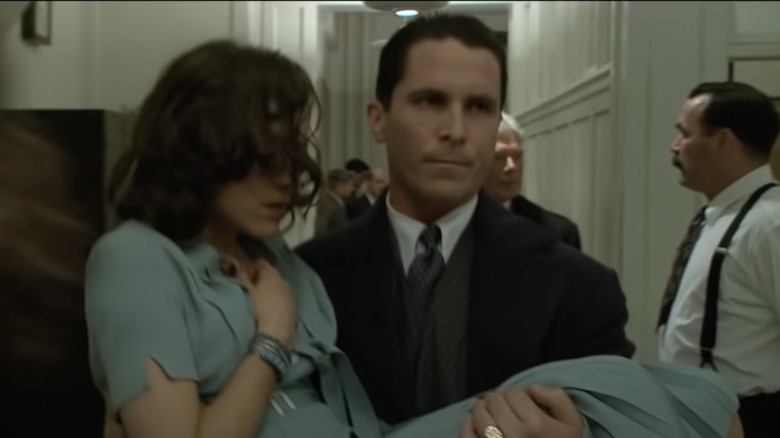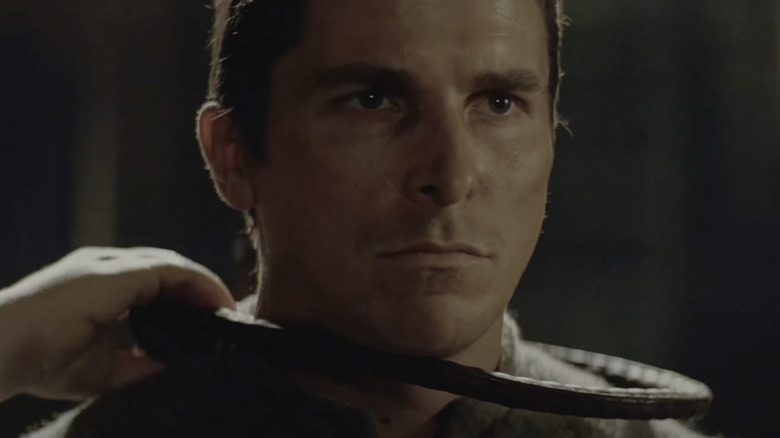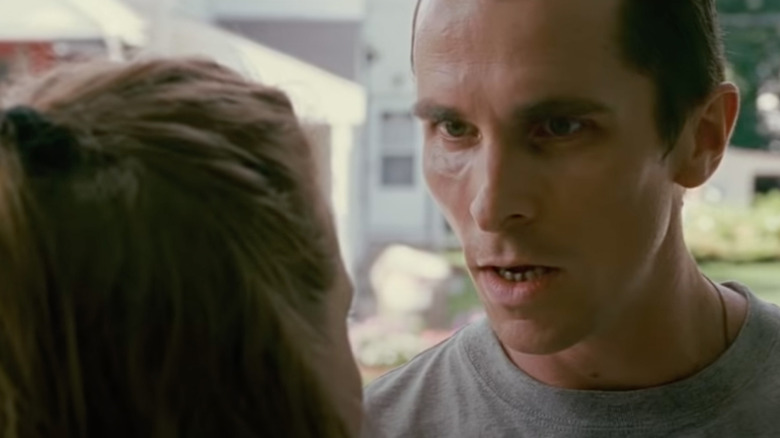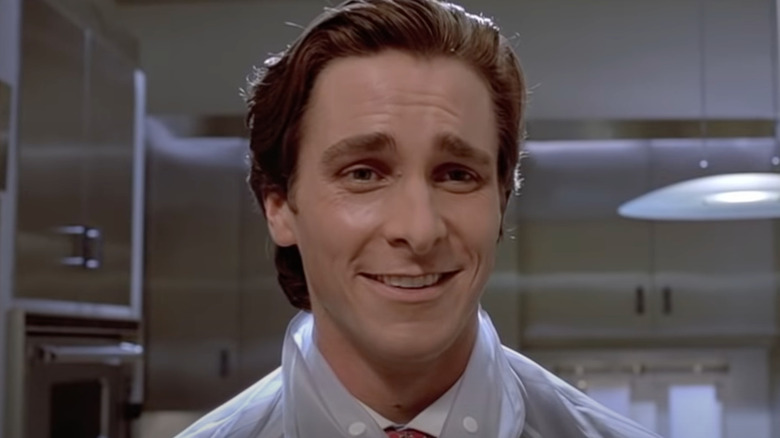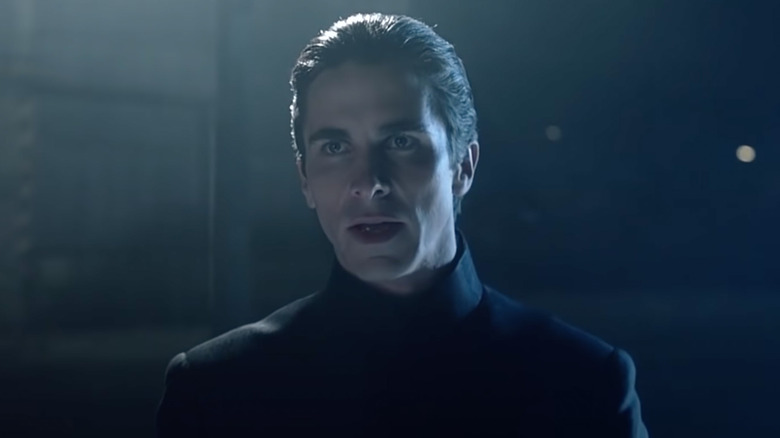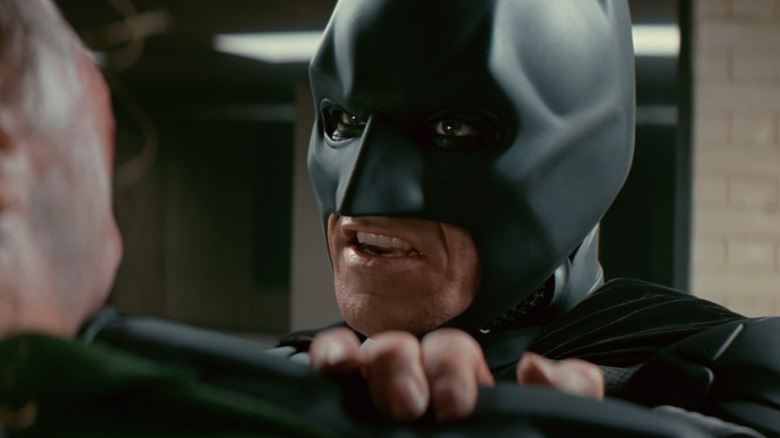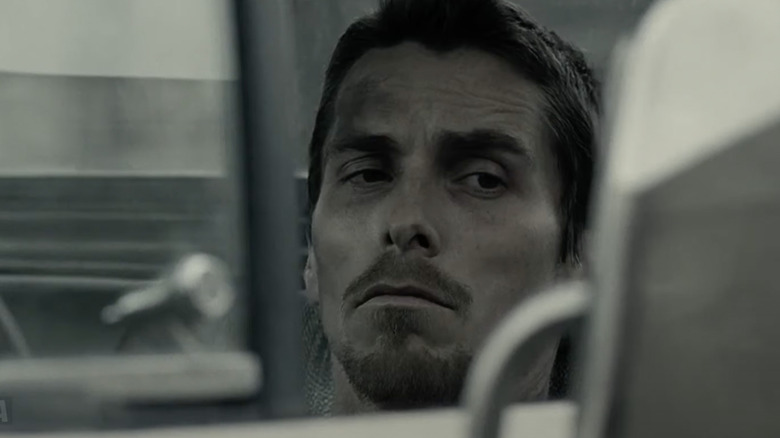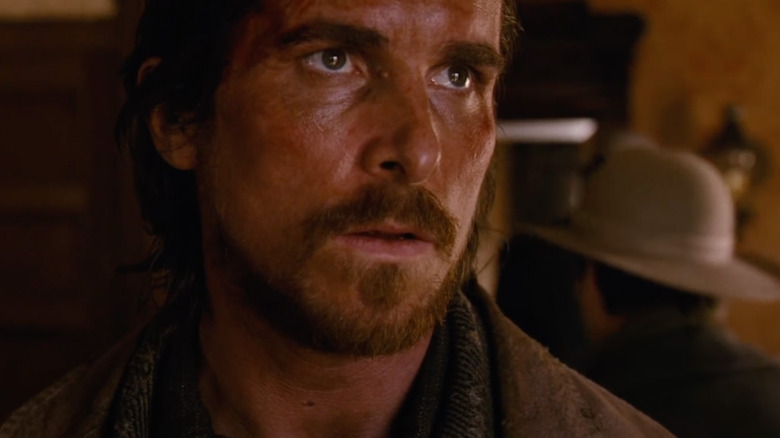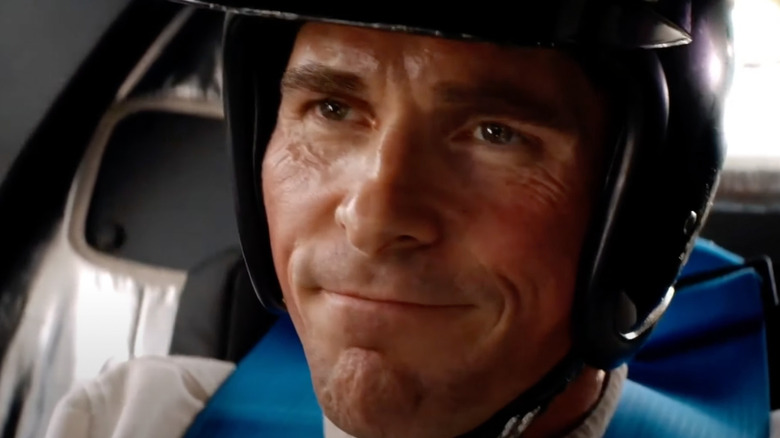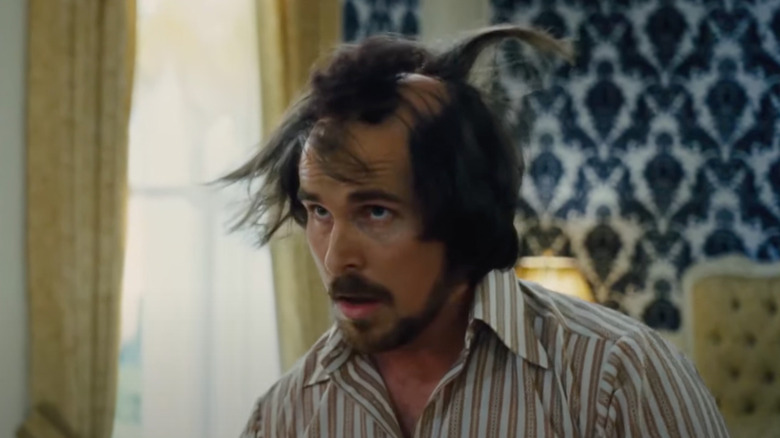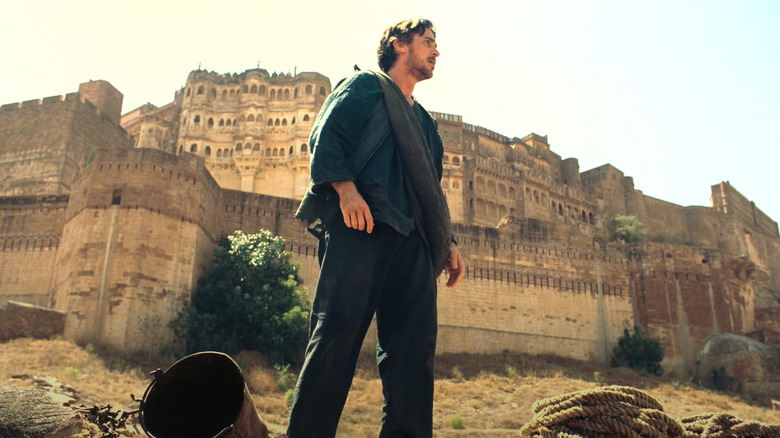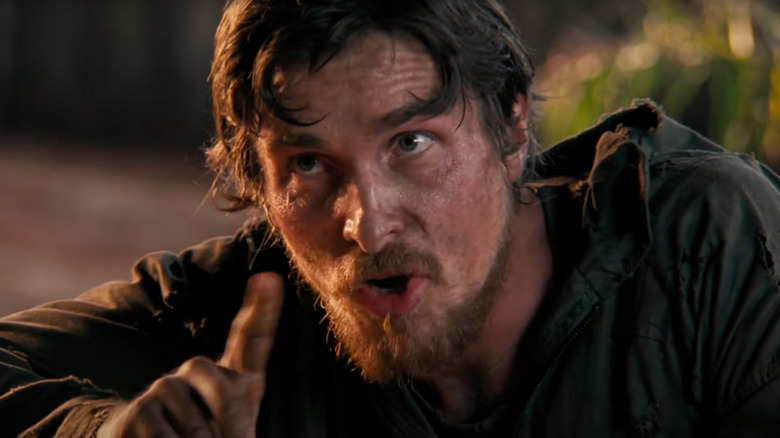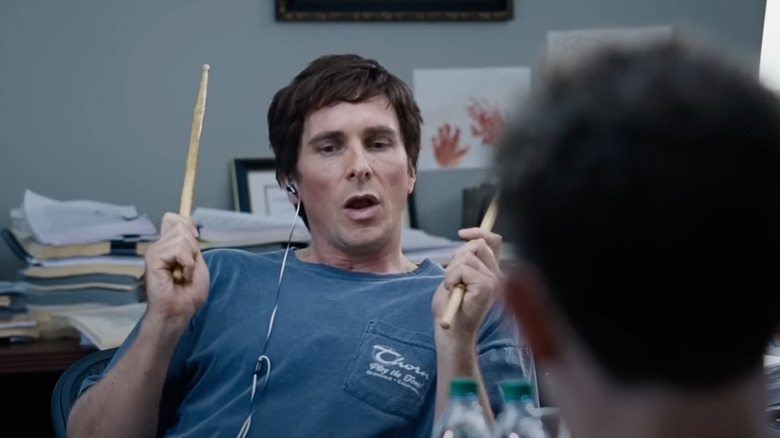The 15 Greatest Christian Bale Movie Moments
Few actors have enjoyed a Hollywood career like Academy Award winner Christian Bale. An artist utterly devoted to his craft whose films have totaled over $5 billion at the worldwide box office, Bale's career has traversed plenty of peaks and valleys since his jaw-dropping performance in Steven Spielberg's "Empire of the Sun," back in 1987 — we don't talk about "Mio in the Land of Faraway" — and he continues to demonstrate an incredible ability to transform into an assortment of unforgettable characters. Whether he's playing Batman or a murderous psychopath, Bale's intense commitment allows him to disappear into roles big and small to a frightening degree. In fact, at times, he's so good I often forget I'm watching an actor.
Now, I could rank Bale's top performances, but that would be too easy — hint: Number one on my list would be "The Fighter." Instead, I thought it would be fun to sift through his vast portfolio and highlight Bale's 15 greatest movie moments — no easy feat, mind you. There are so many outstanding bits to choose from, but the following list consists of the scenes that most stood out to me from Bale's storied career.
Batman arrives — Batman Begins
In 2005, Christian Bale slipped into the cape and cowl and became our new Dark Knight in Christopher Nolan's impressive "Batman Begins." Eager viewers had to wait an hour to see the hero appear. Luckily, Nolan rewarded our patience by delivering one helluva introduction.
Following a lengthy prologue that shows how orphaned billionaire Bruce Wayne (Bale) attained the skills required to serve as Gotham's savior, Batman interrupts a drug pickup at the nearby city docks and picks off a group of criminals one at a time. Nolan shoots the sequence like a slasher film. Gun-toting baddies disappear into the shadows; others flee in terror, and Batman swoops in and carries them off into the night. He eliminates the remaining forces and sets his sights on a nearby car containing crime boss Carmine Falcone (Tom Wilkinson).
"What the hell are you," Falcone mutters as the unseen attacker lands atop his vehicle. Glass shatters. A hand reaches in and brings Falcone face to face with the Dark Knight. "I'm Batman," our hero growls before lifting Falcone into the air. The iconic moment captures Bale's ferocious new take on Batman, a superhero far more fierce than any we had ever seen. While some took umbrage with the raspy voice, I've always felt it matches the character's monstrous personality. Here, we have a Batman who isn't afraid to get his hands dirty, a hero as demented and menacing as the criminals he battles. In short, he's magnificent.
Empire of the Sun — Cadillac of the skies
Long before he hit his stride as Batman in 2005, Christian Bale was that kid from Steven Spielberg's "Empire of the Sun." The story, based on the book of the same name by J.G. Ballard, follows a young posh British kid named Jim (Bale), who spends World War II in a Japanese internment camp where he matures from wide-eyed youth to world-weary adult.
A key sequence occurs midway through the film when Jim gets caught up in a bombing run performed by attacking American P-51 Mustangs. An avid fan of planes in general, Jim rushes to the top of a pagoda and locks eyes with one of the pilots, who, in turn, waves to the overzealous boy. Overjoyed, Jim raises his hands and declares, "P-51, Cadillac of the skies!"
It's a powerful cinematic moment brought to vivid life by Spielberg's impeccable, dream-like direction, Allen Daviau's gorgeous cinematography, John Williams' breathtaking score, and Bale's dazzling performance. Indeed, this might be my favorite scene out of any on this list for its raw emotion, power, and the way it juxtaposes Jim's boyish naïveté with the striking horrors of war.
Melvin saves Billie — Public Enemies
In 2009, Michael Mann released "Public Enemies," the (mostly) true tale of famed criminal John Dillinger (Johnny Depp), who embarked on a series of bank robberies across America following his escape from prison in 1933. Christian Bale co-stars as the soft-spoken Melvin Purvis, the man tasked by J. Edgar Hoover (Billy Crudup) to bring Dillinger to justice, whose devout dedication often clashes with his moral consciousness.
We see this struggle in a scene involving Dillinger's love interest, Billie Frechette (Marion Cotillard). Members of the FBI capture Billie, tie her to a chair, and mercilessly interrogate her using physical force. Before the situation gets too out of hand, however, Purvis arrives and carries Billie to safety while his fellow agents stare in astonishment.
Purvis is unique in that he fundamentally believes in Hoover's mission, but disagrees with his no-holds-bar approach to the law. His saving of Billie serves as an inflection of the film's overarching battle between moral integrity and the need to achieve justice, and a reminder that the good guys aren't always operating on the right side of the law. It's arguably the best scene in "Public Enemies" and one of the most potent of Bale's career.
Abra cadabra - The Prestige
In the dark drama "The Prestige," Christian Bale portrays Alfred Borden, a magician on the rise in 1890s London, who engages in a violent game of obsession with Hugh Jackman's Robert "The Great Danton" Angier. Eventually, the two men meet at a crossroads. Alfred is in prison for allegedly murdering Angier. However, Angier is very much alive and makes his presence known to his rival on the day of Alfred's scheduled death by hanging.
"All I wanted to do was prove I was the better magician," Angier says matter-of-factly. Yikes.
Angier is indeed a great magician, but Alfred still manages to one-up him even in death. After his execution, during which Alfred whispers, "Abracadabra" to no one in particular, he reappears to Angier at a playhouse. How? Alfred is actually Freddy, an identical twin to the real Alfred. The brothers took turns playing the part of Alfred, but the trick, unfortunately, got out of hand, leading to Freddy's death. Now, only Alfred remains, and he murders Angier to break the cycle of violence.
This twist stands as arguably one of the most shocking in cinema history, a secret hidden in plain sight that only the most astute viewers will catch. It's the perfect end to a near-flawless film.
Dicky talks to Charlene — The Fighter
Full disclosure: David O. Russell's "The Fighter" is one of my all-time favorite sports films. The drama about real-life boxer Micky Ward (Mark Wahlberg) and his problematic relationship with his eccentric family always strikes a nerve.
Christian Bale co-stars as Dicky, Micky's wayward brother, a once-promising fighter whose career was cut short due to cocaine addiction, and who now lives vicariously through his brother. Following a tumultuous sparring session, Micky's crew breaks into two factions: his family in one corner and Charlene (Amy Adams), the love of his life, in the other. Dicky realizes Micky needs both parties to succeed and sets out to make things right with Charlene.
What follows is perhaps the best scene of the film, during which Dicky uses his gift for gab (replete with plenty of f-bombs) to persuade Charlene to return to his brother's side. Bale's performance in the film is an all-timer, but this moment gives him plenty of room to strut his stuff. He's incredible as Dicky, a broken man trying to glue the various pieces of his soul back together, fighting his neurotic tendencies. When Micky arrives moments later and says, "You were my hero," we can't help but get teary-eyed when Dicky, walking alone down the street, quietly responds: "I was. I was." Movies don't get much better than this.
Hip to be square — American Psycho
Never let it be said that Christian Bale isn't a funny guy. One need only check out the darkly humorous "American Psycho" for proof. Bale stars as Patrick Bateman, a clean-cut investment banker who spends his nights brutally murdering innocent people.
In an iconic scene, Patrick lures a business chum named Paul (Jared Leto) to his apartment to listen to some Huey Lewis and the News. An intoxicated Paul has no reason to fear his co-worker. He doesn't question why there are newspapers laid underneath his chair. Nor does he suspect foul play when Patrick appears wearing a plastic see-through poncho. Instead, he listens to Patrick's boisterous speech about "Hip to be Square," and only freaks out when the man shouts, "Hey Paul!" moments before bludgeoning him with an axe.
Bale is magnetic in this sequence. He uses his goofy charm to keep his victim (and the audience) at bay, then quite literally morphs into a horrifying monster. There's a great bit where Patrick steps away to put on his plastic garb and then stares at himself in the mirror. We see his transformation into a ravenous murderer in real-time, a steely resolve slowly spreading over his face. When Patrick attacks Paul, you can practically see the pent-up aggression depart his body with each wild swing. He's a unique villain, free of empathy but not entirely unlikable. This moment catapulted Bale to the big leagues.
Puppy fight — Equilibrium
Long before John Wick avenged his dog, Christian Bale used gun kata to take down a group of officers (working for a totalitarian government, no less) after they discovered a puppy hiding in the trunk of his car. It's complicated. Suffice to say, this future dystopian society doesn't take kindly to cute and cuddly animals, necessitating Bale's John Preston to break out some wicked moves to protect his furry pal.
"Equilibrium" is more "Matrix" knockoff than an original sci-fi extravaganza. Still, the film has plenty going for it and, at the very least, ushered in an era of Bale, the action star. The puppy sequence, in many ways, reflects our first look at Bale as a square-jawed hero, and he slides into the part like a glove.
Bouncing about with all the grace of a trench coat-wearing ballerina, Preston swiftly makes mincemeat of his foes before posing like a boss, light rays emanating from behind his person. Say what you will about the remaining film, but Bale was born to play a badass, and this bit in "Equilibrium" placed him front and center for all the world to see.
Interrogation scene — The Dark Knight
Christopher Nolan's "The Dark Knight" pits Christian Bale's Batman against Heath Ledger's anarchist Joker with beyond-stunning results. The duo square off multiple times throughout the picture, most memorably during an interrogation scene set at Gotham City Police Department. After a wild chase through Gotham, Batman and Jim Gordon (Gary Oldman) lock the Joker behind bars. However, when Harvey Dent goes missing, Batman confronts the Clown Prince of Crime, leading to one of the best moments in comic book movie history.
The dialogue — "You complete me!" — acting, and ferocity of the sequence are flawless. Bale portrays Batman as a man trying to maintain his composure, even as the Joker threatens everything (and everyone) he holds dear. Eventually, he snaps and pummels his foe repeatedly, and Joker merely laughs off his vicious attacks.
"You have nothing, nothing to threaten me with. Nothing to do with all your strength," Joker snarls. This is the moment in "The Dark Knight" where things drastically turn for the worst. Batman finally sees Joker for what he is: an unstoppable, even cunning, unpredictable force of nature who, as Alfred Pennyworth (Michael Caine) foreshadowed earlier, wants to see the world burn. Taut, well-executed, and undeniably intense, the interrogation scene encompasses everything great about "The Dark Knight."
Haunted house — The Machinist
For "The Machinist," Christian Bale slimmed down to 120 pounds to portray Trevor Reznik, a man dealing with grief resulting from a past incident. Creepy, haunting, and unreasonably grim, "The Machinist" is an engrossing psychological deep dive into the dark pits of despair, highlighted by Bale's go-for-broke performance.
Director Brad Anderson paints Trevor as a pathetic figure trapped in a personal hell of his making, drenched in moody grays and heavy shadows. "The Machinist" is borderline horror with its gruesome imagery, frightening monsters, and incredibly dark subject matter. Indeed, in arguably the film's most memorable bit, Trevor visits a haunted house called Hell Ride on Route 666 and relives memories he tried hard to suppress. This is where everything comes together, and we see a realization on Trevor's face even as he tries to make light of the situation: "This is one heck of a ride," he quips after seeing dismembered body parts and a man hanging next to a "Guilty" sign.
At one point, he and Nicholas (Matthew Romero), his traveling companion, reach a fork in the road — right to salvation or left to Hell. Naturally, they go left, much to Trevor's annoyance, and the poor guy continues his downward spiral.
I've only seen "The Machinist" a few times, but this scene haunts my nightmares. Sure, it's a little on the nose, but Anderson uses the sequence to illustrate Trevor's inner turmoil and allows us to see a visual manifestation of his grief. It's brilliant.
Dan gets Wade to the train — 3:10 to Yuma
"3:10 to Yuma" marks one of Christian Bale's most underappreciated roles. This action-packed western from director James Mangold captures the gritty frontier like never before and tells the tale of Dan Evans (Bale), a poor, despondent rancher tasked with delivering ruthless criminal Ben Wade (Russell Crowe) to a train bound for Yuma prison. Throughout the picture, Dan and Ben bond and come to respect one another, leading to a thrilling showdown.
Taking a brief reprieve in Contention, Ben ultimately agrees to allow Dan to take him to the train, primarily out of sympathy, and the pair battle ruthless outlaws (led by Ben Foster's terrifying Charlie Prince) and greedy townsfolk en route to their objective. Mangold punctuates the action with an emotional undercurrent that stems from Dan's fractured relationship with his son. When the pair finally arrive at the train, Dan is mercilessly gunned down by Charlie Prince and left to die. Distraught, Ben effortlessly kills his crew and boards the locomotive, ensuring Dan's family collects the reward. Dan's son, William (Logan Lerman), watches his father pass away, the chugging train engine mimicking his fading heartbeat.
There's a lot to unpack here, from the film's deconstruction of heroes and villains to the many ways Mangold plays with our expectations. Nothing is ever as it seems. Of course, Bale and Crowe are magnificent. Their astounding performances are why I'm always left wiping tears from my eyes once the credits roll.
Ken slows down — Ford v Ferrari
In "Ford v Ferrari," Christian Bale stars as Ken Miles, an unruly British driver with an apparent disdain for authority, who teams up with hot dog former American driver Carroll Shelby (Matt Damon) to prove that a Ford race car can beat a Ferrari.
Ken and Carroll initially butt heads, but eventually learn to work together to craft an all-time vehicle that effortlessly stomps the competition. Unfortunately, Henry Ford II (Tracy Letts) and his wormy vice president Leo Beebe (Josh Lucas) expect all of their vehicles to finish simultaneously in the name of publicity. As such, when Ken blows past his foes at the 1966 24 Hours of Le Mans, he must make the ultimate decision: slow down and play team ball or race on and achieve fame and glory for himself.
Bale does an impeccable job displaying Ken's range of emotions. The man goes from elated to vexed to heartbroken in seconds. Eventually, he slows down and lets his teammates catch up, a decisive moment showing Ken's incredible character growth. Once a loner whose racing career had already zipped by, Ken now understands the value of teamwork, even if his decision ultimately leaves him in the dust due to a technicality.
No matter, Ken shrugs off the disappointment, knowing full well that he got to experience one helluva drive. I'm not crying, you're crying!
Opening scene — American Hustle
There are so many wonderful bits in David O. Russell's "American Hustle" that it's hard to pinpoint one above the other. Still, suppose I'm forced to make a choice. In that case, I'd either go with the scene near the end where Irving Rosenfeld (Christian Bale) and Sydney Prosser (Amy Adams) take down Richie DiMaso (Bradley Cooper) — a satisfying conclusion for the two-faced character — or the first scene of the film that introduces us to our trio of characters.
The latter hits hard because it's such a fabulous tone-setter that deftly establishes the duplicitous nature of the picture. We can't take anything at face value. Irving's entire look is little more than a facade; the man strategically hides his bald spot using what appears to be super glue. There's also the use of mirrors, which always represent duality in motion pictures, but here further enhance the extremes Irving is willing to go to see the job through. The sequence is also side-splitting, especially when Richie appears and messes up his look. From this point on, it's hard to trust anyone.
Later, we see Irving and Sydney at a pool party draped in summer attire, except it's winter outside. Another subtle hint at the couple's duality or a group of people trying to make the most out of a cold day? You decide. In any event, the opening to "American Hustle" is a perfect example of how to kick a film off on the right note.
The climb — The Dark Knight Rises
"The Dark Knight Rises" may not live up to its predecessor, but it's still an outstanding film with some of the best sequences of the entire series. One such scene occurs late in the picture when Bruce Wayne crawls out of the pit where Bane (Tom Hardy) left him to die following their dramatic encounter. At this juncture, Bruce has learned to fear death once more and opts to do the treacherous climb without a rope. Arriving at the top, he must leap across the deep chasm to reach a ledge on the other side, allowing him to escape the prison — no easy task, even for Batman.
With the stakes raised and staring death straight in the eye, Bruce stands, takes a deep breath, leaps into the air, and ... reaches the other side. Hans Zimmer cranks his thunderous score to maximum decibels as Bruce rises from the pit and returns to Gotham City to take on Bane.
The climb marks the peak of Christopher Nolan's "Dark Knight" trilogy, a thrilling beat ironically lacking in costumed heroes or villains. Nolan doesn't aim for cheap theatrics but instead for something more profound. By climbing out of the pit, Bruce mends his broken soul and finally overcomes his anguish. He's now free to live a life devoid of Batman, bringing the character's emotional journey to a very satisfying conclusion.
Worm-eating scene — Rescue Dawn
As stated above, Christian Bale goes to great lengths to raise his performances above mere showmanship. In "Rescue Dawn," the actor goes all in to portray Lt. Dieter Dengler during his time in a prison camp during the Vietnam War. From the moment he arrives, Dieter tries to figure out how to escape and rallies the starving men of the prison camp to his cause. As hope turns to despair, Dieter continues to fight. In one stomach-churning scene, he eats a plate full of live maggots while conversing with one of his inmates. Dieter doesn't hesitate to eat the food, knowing that he must keep his body and mind intact to return home.
Bale, who actually ate live maggots and a snake to boot, believably conveys a desperate man clinging to hope in this sequence. While the others in the camp have all but lost their minds or are on the brink of insanity, Dieter does whatever he can to keep his eye on the prize. In the end, he remains the lone survivor, and the maggot-eating bit is a telling example of how he survived where others died.
Burry's introduction — The Big Short
Oh boy, do I love "The Big Short." Everything about Adam McKay's Academy Award-winning film works, from its impressive cast to its wicked humor to how it uses Margot Robbie in a bathtub to explain the United States financial system. Christian Bale stars as Michael Burry, a hedge fund manager among those who predicted and gained from the subprime mortgage crisis. We first meet Michael during a meeting where he explains the fragile state of the housing market. McKay cuts to footage of Michael as a young man and shows why he is the way he is — eccentric. He enjoys solitude, primarily due to a glass eye that makes him look a tad senile and his inability to carry on meaningful conversations. "Even when I compliment people, it comes out wrong: you have a very nice haircut. Did you do it yourself," he asks an eager applicant. Even his smile appears forced and off base.
Here, we have a man whose unique mannerisms and social ineptitude made it possible for him to predict the housing market crash in 2005, two years before it occurred. We return to Michael at various points throughout the film. Still, this opening scene says all we need to know about who he is and why few listened to or believed his predictions. There's a reason the man earned another Oscar nomination for his efforts.
